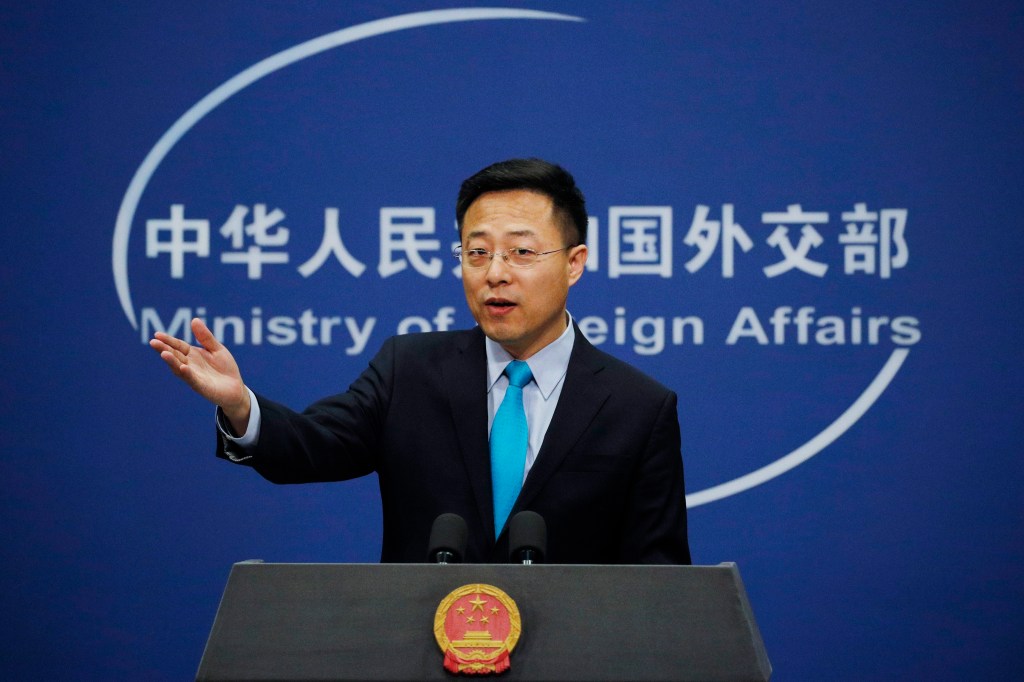A Chinese state-run newspaper is pushing an unfounded conspiracy theory that a U.S. military athlete was the patient zero of coronavirus.
The Global Times, citing known U.S. conspiracy theorist George Webb, claims that the virus was manufactured in a U.S. military lab and brought to China by a cyclist who took part in the World Military Games in Wuhan in October.
Videos by VICE
The claim is part of a wider effort by the Chinese government to change the narrative about the origin of the coronavirus, as the Trump administration continues to label the pandemic as the “Chinese virus” or the “Wuhan virus.”
The conspiracy theory linking the outbreak to the U.S. athletes’ visit to the games in Wuhan was first promoted by foreign ministry spokesman Zhao Lijian, who tweeted about it earlier this month. It was then repeated by other officials and by state-run news outlets.
It appeared that Beijing was standing down from its conspiracy push earlier this week, when China’s ambassador to the U.S. Cui Tiankai dismissed the conspiracy theory as “crazy” in an interview with Axios.
But on Wednesday, Beijing doubled down by publishing the claims first put forward by Webb.
The Global Times admits that Webb’s conclusions are “without strong evidence”, but it also claims that Chinese citizens and experts are calling on the U.S. to publish details about the athletes who traveled to Wuhan.
Among those cited is Li Haidong, a professor of U.S. studies at the China Foreign Affairs University in Beijing. The Global Times quotes him saying that Washington needs to publish the “relevant information regarding the athlete’s health status and infection records to clear public doubts and help with the scientific study on the virus’ origin.”
READ: Beijing is pushing a conspiracy theory that the US Army brought the coronavirus to China
The theory was repeated in several other Chinese-language outlets and was also shared by WeChat users.
As China tries to refocus attention away from Wuhan and onto the U.S., the Trump administration appears unwilling to back down from using what many deem racist language about the coronavirus.
Donald Trump on Wednesday said he was going to stop using the term “Chinese virus,” telling Fox News that “we shouldn’t make any more of a big deal out of it.” Trump said he only began using it because of the conspiracy theories being shared by Chinese officials.
But his Secretary of State Mike Pompeo is continuing to push the use of these problematic terms.
Pompeo held a virtual conference with leaders from the G7 alliance on Wednesday but they were unable to agree on a joint statement on the global pandemic. The reason, according to sources speaking to ABC News, was that Pompeo insisted that any statement include the term “Wuhan virus.”
China initially suppressed news of the outbreak, silencing whistleblower doctors and other citizens seeking to share information from Wuhan during the peak of the outbreak. And yet, while the World Health Organization has acknowledged China made some “mistakes” in its initial handling of the outbreak, WHO officials have been largely positive about how Beijing has responded to the crisis.
But the U.S. continues to lay the blame for the global pandemic, which has now killed over 21,000 people, on Beijing’s mishandling of the crisis accusing it of “blatant and dangerous propaganda” about the disease’s origins.
“First [China] tried to suppress the news. Then, it worked to protect its own population while selectively sharing critical information, such as genetic sequence data, and continuing to stonewall international health authorities that were offering assistance, requesting access and seeking more information,” wrote Woody Johnson, U.S. ambassador to the U.K., in an opinion piece in the London Times on Thursday.
“Had China done the right things at the right time, more of its own population, and the rest of the world, might have been spared the most serious impact of this disease.”
Cover: Chinese Foreign Ministry new spokesman Zhao Lijian gestures as he speaks during a daily briefing at the Ministry of Foreign Affairs office in Beijing, Monday, Feb. 24, 2020. (AP Photo/Andy Wong)




